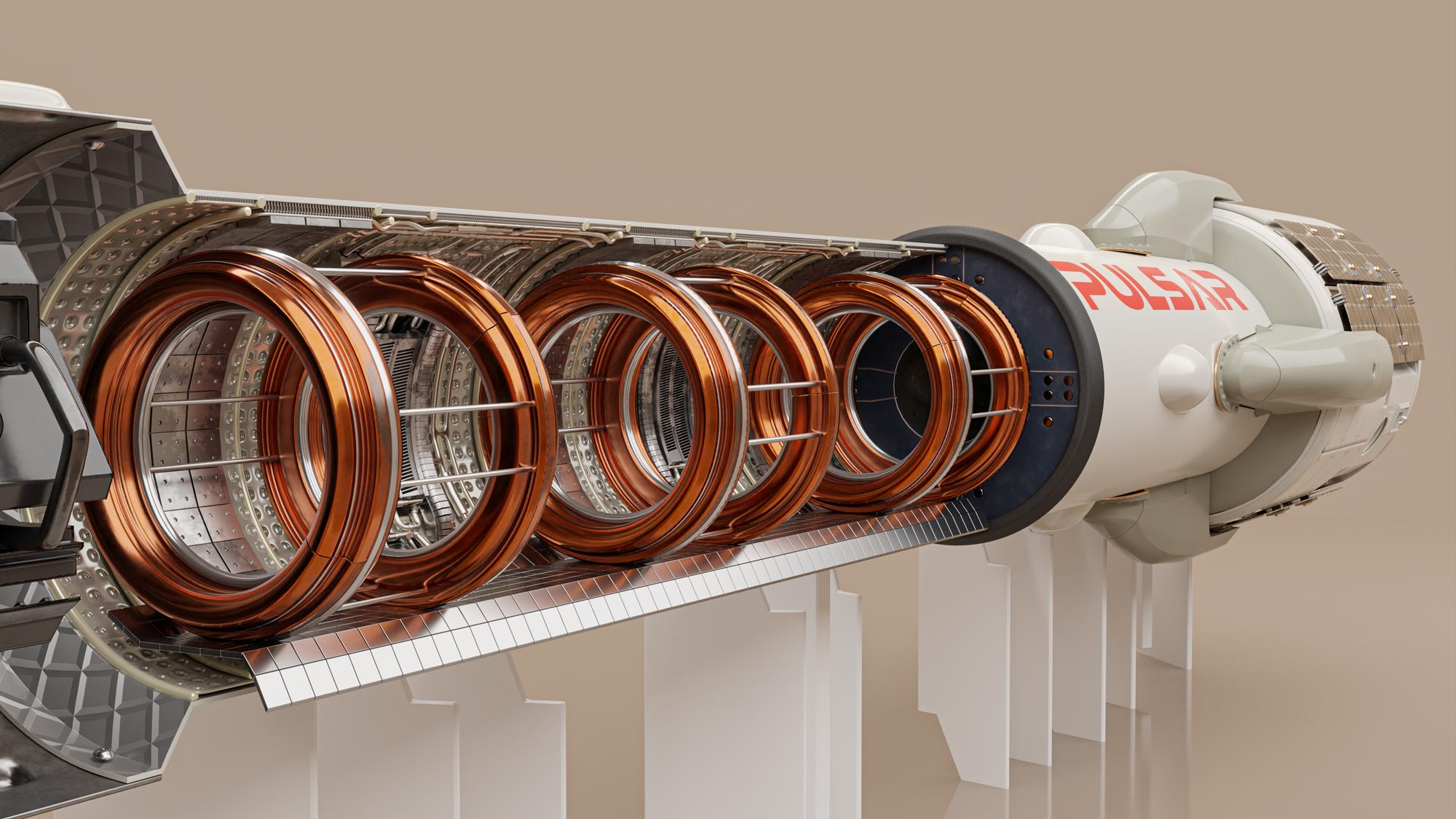“You know, I think it takes maybe 10 years before you can really start to gain some really meaningful insight into your chosen field. And for me, that turned out to be thermonuclear physics as an absolute passion I could do for another 20 years,” says Richard Dinan, the founder of Pulsar Fusion, a UK based company.
Pulsar is at the cutting edge of space propulsion technology, using the power of nuclear fusion to drive space exploration to unprecedented distances. But this is not science fiction. Rather, it represents the dawning of a new era in space travel.
Dinan, a serial entrepreneur with a background in engineering, gravitated to the space industry after a successful exit from a previous venture at 21. His fascination with molecular physics and desire for longevity in a chosen field led him to the enigmatic and challenging world of fusion.
“Thermonuclear physics is an absolute passion that I could do for another 20 years”, says Dinan. “You have got to love it.”
His curiosity was piqued by iron meteorites in Namibia, which contained nickel blended in with the iron, remnants from the death of a star, a unique product of fusion. These strikingly beautiful signs of the universal power source sparked numerous questions leading Dinan on a quest for knowledge.
“An asteroid looks like the exhaust product of a star, iron formed from the fusion of helium atoms once all the hydrogen reserves have run out. It is actually the most beautiful visual demonstrator of how pervasive fusion technology is,” says Dinan.
Indeed, when stars have no more hydrogen to fuse in their cores, they start to contract, heating up the surrounding layers that still contain some hydrogen. Hydrogen fusion thus restarts, which is called the shell hydrogen burning stage. Although the star’s envelope expands and its surface cools, the core continues to contract until helium burning can begin. Helium fusion results in progressively heavier elements such as carbon and oxygen, until iron and nickel are formed.

Aside from the pursuit of his passion, Dinan identified a gap between the opinions of expert scientists and the popular understanding of fusion. “People think once fusion is achieved in a lab, it is time for it to power homes,” he explains. But the reality is far from it. He outlines the connective processes, from harnessing the kinetic energy of neutrons to create heat, to driving turbines for electricity. The entire progression is cumbrous, requiring massive investment and timeframes exceeding a decade.
Why not utilize the fusion conditions without investing in power stations? His solution – fusion based propulsion.
The move into developing nuclear fusion-powered rocket for interstellar travel has not been easy. Dinan specifically noted the still daunting financial challenge.
“I would sit with mathematicians and physicists, and I would say, explain this to me, until I really understand it. And as an investor, I realized that other people are not going to want to go through that process in order to make an investment,” Dinan adds.’ Dinan has self-funded much of Pulsar Fusion’s operations, with additional support from UK Space Agency (UKSA) in 2021 to further develop the Hall Effect Thruster (HET) plasma satellite engines, capable of 20km-per-second particle exhaust speeds. Last year, the company was awarded funding from the UKSA again, to develop ‘integrated nuclear fission-based power systems for electric propulsion.’
Pulsar Fusion currently produces hybrid, hydrogen and electric propulsion systems to address market demand, but the long-term vision is to move towards nuclear propulsion, suitable for interstellar travel. The company has already shown remarkable progress in this regard by conducting experiments with plasmas in their own vacuum chambers. They were drawn towards low temperature plasmas, which are conventionally used in electric propulsion. Space, being a low temperature vacuum environment, is a better place for fusion experiments, especially because the other side of fusion involves very powerful magnets as superconductors which run at extremely cold temperatures. This is where Dinan saw an unmissable opportunity.
Pulsar Fusion’s HET electric propulsion engines for commercial applications have already attracted clients in the aerospace sector. The success of these engines led the company to venture into rocket engine technology as well, specifically stage two rocket engines for use in space. These rockets will be able to travel at up to 349 km/s, which means they could get to Mars in about two weeks instead of nine months. Ultimately, these rockets will carry three small nuclear fusion reactors into space making one giant spaceship once joined together.

Dinan believes firmly in the inevitability of fusion power, but the concept is not without its skeptics. Many astrophysicists claim that achieving fusion propulsion is impossible. Dinan remains unfazed and eager for the future.
“Fusion is nature’s power source, right?” says Dinan. “If we are that species that can travel meaningful distances in space, and potentially go to neighboring planets like around Alpha Centauri, a three-star solar system about four light years away, then it will be with fusion. And we can do fusion.”
Looking towards 2030, Pulsar Fusion is gearing up to push new frontiers. Its immediate goal is to be first to conduct a fusion experiment in space. Moreover, Dinan envisions being a reliable provider of fusion propulsion technology, enabling the exploration of neighboring planets and beyond. Despite the challenges, Dinan remains committed, essentially echoing a reality where “we are that species.”
Featured image: Credit: Pulsar Fusion
Share this article:










